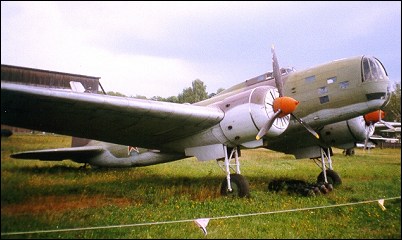 |
Ilyushin DB-31935 |  |
| BOMBER | Virtual Aircraft Museum / USSR / Russia / Ilyushin |
 |
The TsKB-26 long-range bomber prototype appeared in 1935, a twin-engined metal low-wing monoplane powered by 597kW Gnome-Rhone K14 radials. Demonstrated by test pilot Vladimir Kokkinaki on May Day 1936, the prototype went on to establish two world altitude records during July 1936. A second prototype, the TsKB-30 had an enclosed instead of open position for the pilot, Soviet M-85 engines and a metal rear fuselage. The TsKB-30 also broke records and then attracted world interest by flying from Moscow to Canada, where pilot Kokkinaki had to make a wheels up landing on 28 April 1939 after covering a distance of 8000km. By then the bomber had been in production for the Soviet air arm for more than two years. Under the military designation DB-3 it served widely with the ADD (Long-Range Aviation) and the V-MF (Naval Aviation), remaining operational well into the war with Germany, DB-3s being credited with some of the earliest attacks on Berlin. The DB-3 served also with the Finnish air arm between 1940 and 1945, five captured aircraft being augmented by six purchased from German war booty supplies. DB-3 production terminated in 1940 with the 1,528th machine.

|  COMPANY PROFILE | |||||||||||||||||||||||||||||||||||||||||||||||||||||
 |

|
